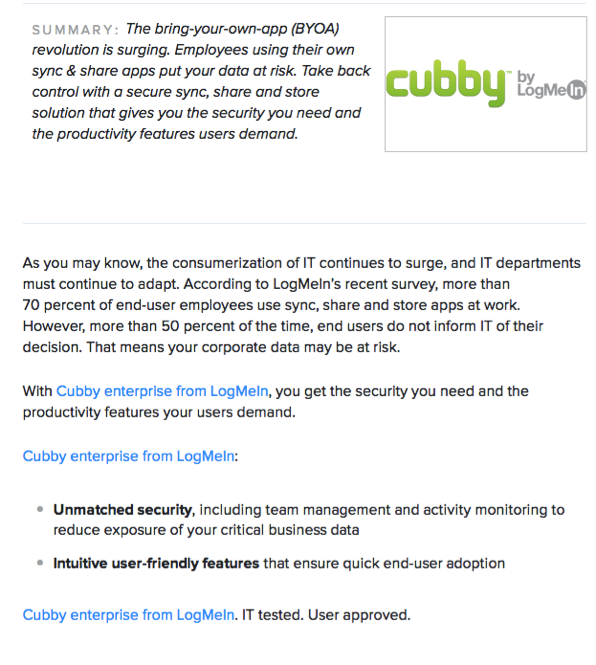
If you haven’t watched John Oliver’s episode about native advertising, feel free to pause and check it out before continuing. To spare you 12 minutes, he basically slams native advertising and coins it “corrupted news."
While some marketers are calling his analysis BS and attempting to defend native advertising, Oliver brought up a conversation that’s worth having. Paying to market your product in a way that deceives an audience isn’t an effective, long-term approach, and marketers need to recognize this fact if they want to succeed with native advertising.
Marketing content masked as editorial seems counter-intuitive to building trust, which is crucial to attracting brand evangelists. But before we dive into the controversy, let’s break down this new trend.
What Exactly Is Native Advertising, Anyway?
According to a Copyblogger study, only 3 percent of people surveyed are confident that they know what native advertising is, while 51 percent say they’re skeptical of it.
Native advertising is a form of paid online marketing in which the ad form is naturally embedded into the platform a user is engaging with and seamlessly aligned with the user experience on that site. In short, it’s brand-sponsored content that looks like the publication produced it.
So what’s all the hype about?
As a fresh alternative to waning display ads, native advertising offers brands a new, exciting alternative to reach consumers online with less “in your face” advertising efforts. But with this new trend also comes a healthy dose of controversy.
On one side, there’s the publishers. Because it’s easy to confuse native ad content with editorial, it challenges the longstanding separation of the editorial and business sides of journalism. It poses the question: Is it ethical for journalistic institutions to publish branded content that readers might misconstrue for transparent journalism?
On the other hand, there’s question over the intention of marketers. I was listening to the “PNR This Old Marketing” podcast with Joe Pulizzi and Robert Rose, who discuss the controversy over this marketing tactic. They comment on Doug Kessler’s article, “Native Advertising’s Apologists Miss the Point,” and agree with Kessler that while native advertising can be deceitful, most marketers don’t have villainous intentions. They’re simply trying to adapt to the rapidly shifting marketing world.
Despite the praise or criticisms, native advertising exists and will continue to exist. But many marketers are struggling to strike a balance between advertising and education. Those who get it right are winning the praise of marketers and consumers alike, while brands that have obvious self-serving intentions don’t seem to be accomplishing any marketing goals. Let’s take a look at examples of both.
Brands That Nailed or Failed at Native Advertising
Failed It: Discover Card on BuzzFeed

If you search "Discover" on BuzzFeed, there’s a long list of sponsored content. Articles vary from “The 15 Most Loyal Dogs On The Internet” to “11 Signs You’re A Food Critic In The Making.” Clearly, the articles don’t have anything to do with improving your credit score or finances. Relevance is not Discover’s priority here.
While the company does post some educational content on its blog, publishing external sponsored content around these fluffy topics won’t lead readers to associate Discover with a superior banking experience.
Failed It: Gigaom’s Sponsored Post for Cubby Enterprise by LogMeIn

Another example of native advertising gone wrong is LogMeIn’s post on Gigaom, a publication featuring emerging technologies and trends in the tech world.
While I understand the brand’s desire to promote on Gigaom, it doesn’t even attempt to disguise the ad as something else; the 118 words blatantly advertise its SaaS product. And Gigaom has received much backlash for publishing this post.
Nailed It: Netflix and The New York Times

One example of flawless native advertising was Netflix’s post around its hit series “Orange Is the New Black” in The New York Times. It’s labeled as a paid post and teaches readers about the male versus female model in prisons. As you read, you learn about the abuse women experience in prison or how their families are affected when women get incarcerated. Netflix educates its audience here and adds a layer of humanity to the brand, which are defining aspects of successful native ads.
I can also understand The New York Times’ decision to publish Netflix’s ad. When used to add value to readers, native advertising can be effective. The problem is, marketers and publications still haven’t figured out that balance, and the bad examples seem to outweigh the good ones.
It seems like the brands that are winning big with native advertising are the ones focusing on educating consumers with inspiring content, not promotional plugs. But if native advertising is heading down a less promotional path, then where do we draw the line with thought leadership content?
Homing in on an intended audience and delivering a valuable message tailored to that specific group separates thought leadership content and native advertising. Let’s explore these differences and others a bit further.
The Stark Differences Between Thought Leadership Content and Native Advertising
Camouflaged promotional content will work for some companies — it already has. But companies looking to attract quality leads will soon realize that deceiving their audience isn’t building trust or nurturing meaningful relationships. And that’s where a thought leadership strategy gets on stage and takes a bow.
When strategizing the thought leadership content we help our clients produce, we pinpoint questions or concerns their audience has, extract their unique insights and experiences, and craft content that marries the two. Then, we use our extensive publication relationships to publish their content where their audience spends the most time. The result? Content that overcomes customer pain points and adds values to a specific reader base.
Editors at more than 1,000 publications are accepting the content we pitch for our clients because the benefit is crystal clear. Our clients author the content and don’t pay for the recognition; they earn it, and publications can roll out fresh content more often. And because contributors regularly publish content in a highly targeted publication, they tap into a network of people who actually want to hear their message. That’s the difference.
While native advertising is promotional, thought leadership content is helpful, relevant, and authored by the expert, not the brand.
By pushing out applicable educational content to your customers, clients, business partners, etc., you’re essentially speaking to a room of people who could learn from your experiences and aren’t forced across your elusive advertorial. The people who read your content (ideally your niche market) should come away with actionable tips and advice they can apply to their own personal or professional lives. You should leave them craving more because the experience and advice you offered was that insightful.
To learn more about the types of thought leadership content, check out Kelsey Meyer’s recent blog post, “There’s More Than One Way to Be a Thought Leader.”
Although they’re easy to confuse at first glance, native advertising and thought leadership are on two entirely different playing fields. They can coexist, but native advertising has to be clearly marked, transparent, and relevant so readers don’t feel duped.
To succeed in native advertising or with your thought leadership content, you have to understand the priorities of each. Thought leadership articles are building blocks to meaningful, mutually beneficial relationships while native advertising strives to earn brands exposure. So I challenge companies to take action, do their research, and determine what they want to get out of their published content.










